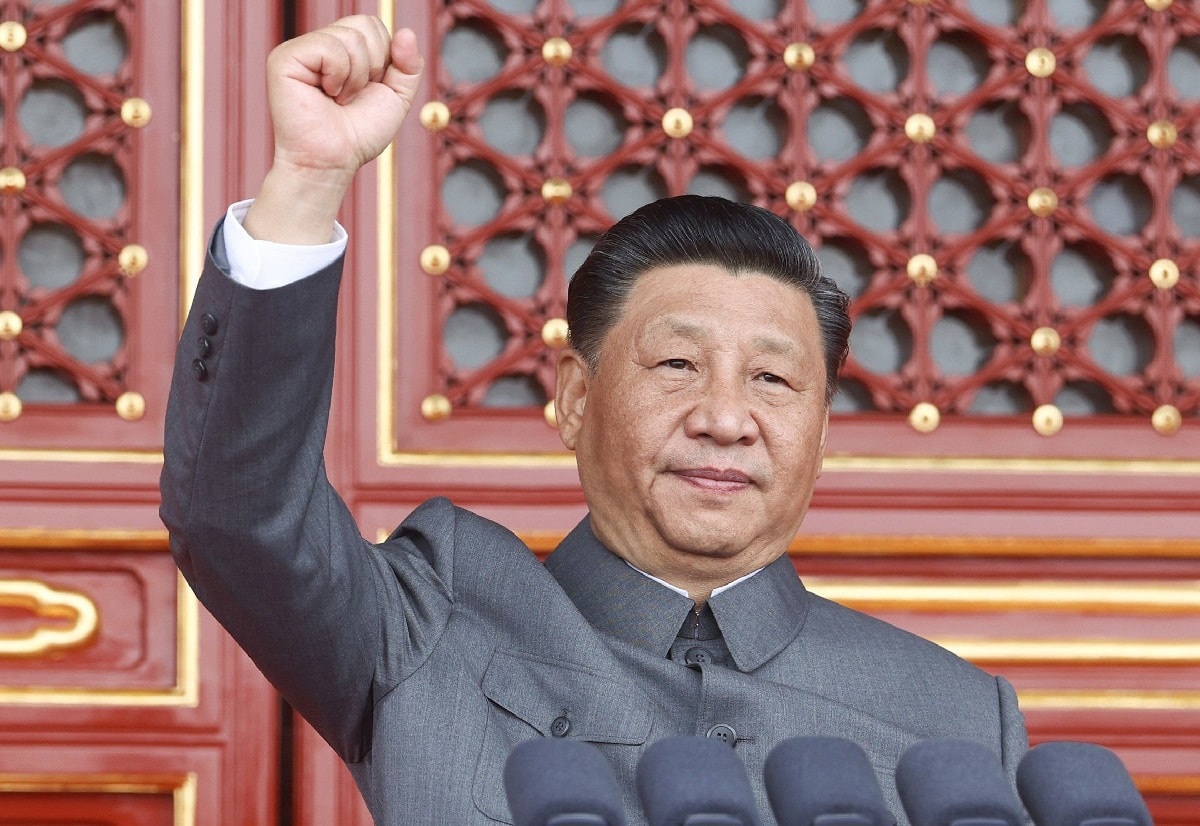China’s dramatic shift from draconian restrictions to relaxed COVID-19 rules is likely to cause more economic disruptions than benefits. The poorly performing economy will only further undermine the Communist Party’s claims of effective governance.
In 2022, General Secretary Xi Jinping directed Chinese officials to make sure China’s economic growth would outpace that of the United States. The latest official data showed that, although China’s economy maintained a higher economic growth rate (3%) than the United States (1.6%), it fell well short of the 5.5% growth target originally set by Beijing .
China’s active pursuit of its “zero-COVID” policy, which included mass testing and the strict lockdown of several important cities, largely hobbled economic activity last year. The retail sector suffered the most from the draconian restrictions on China’s population. Private consumption was restrained further due to the consistently high unemployment rate (averaging 6.7% in 31 major cities in November 2022).
Despite new measures launched in November to rescue the ailing property sector, China’s home prices fell even faster in December. For the year, the real estate sector declined more than any other sector—5.1%—according to China’s National Bureau of Statistics.
Manufacturers in China also suffered from a labor shortage due to the COVID-19 restrictions and soft foreign demand. The production of integrated circuits (semiconductor chips) declined the most, by 12%, amid the main industrial goods produced in 2022.
The Chinese government hoped its dramatic shift in COVID-19 policy, implemented in December, would be a panacea for its slumping. But the attempt to improve economic stability and government legitimacy presented a massive new challenge: a sudden rise of COVID-19 cases.
To some extent, the policy turnaround reflects the belief by China’s leadership that a surge of cases was inevitable: If you can’t contain the fire, you might as well let it burn out.
A rapid climb in the number of COVID cases was witnessed even before China relaxed its pandemic restrictions on December 7. According to Our World in Data, confirmed cases in China rose to over 60,000 cases per day on December 2, 10 times the total of the month prior. However, the World Health Organization estimated that the actual number could be much higher, especially after the government dropped mandatory mass testing on Jan. 8.
The White Paper Revolution, the name for several protests against the Chinese government’s strict zero-COVID policy in late November, could have pushed the government to unwind the COVID-19 rules despite the climbing case numbers.
Economically, the strict lockdown was also taking a toll. The slowing economy and the prolonged property market downturn have eroded local governments’ financial health. Even with capital transfers from the central government, local governments could not afford to prolong the expansive testing and control measures indefinitely.
However, China did not take advantage of its lockdown period to prepare for an economic reopening. Even today, China’s health care sector has a relatively low critical care capacity. Its intensive care beds numbered 9.78 per 100,000 people in 2022, much lower than 35 per 100,000 in the United States in 2020. And while 87% of Chinese people have received two shots of the local homologous vaccines, studies show that the Chinese vaccines are less effective than the mRNA vaccines made by Pfizer and Moderna.
The Chinese government is confident that the economy will return to its growth track after the latest COVID-19 wave peaks. However, foreign investors have lost a great deal of confidence in China due to its excessive lockdowns and ongoing geopolitical tensions with the United States.
According to a survey of corporations by the U.S. Chamber of Commerce in Shanghai, one-third of respondents redirected planned China investments to other destinations in 2022, almost double the number of companies that did so in 2021.
Similarly, a number of European corporations have already moved their manufacturing production from China to Vietnam. And several globally prominent carmakers shifted their procurement from non-China sources to the American market more than a year ago.
Arguably the most devastating impact on China’s economy will be the relocation of most of Apple Inc.’s iPhone production from China to India. Dell Technologies also plans to stop using China-made chips by 2024. According to the World Trade Organization, nearly half of China’s exports in 2021 were semiconductor chips and telecommunication equipment (such as iPhones, tablets, etc.)
Chinese consumer purchasing won’t bounce back any time soon either. The new surge of COVID-19 patients and the property woes will restrain household consumption. In addition, the citywide lockdowns in Hubei and Shanghai in 2020 and 2022, respectively, suggest that personal consumption will likely take two to three quarters to recover to pre-lockdown levels.
Weak exports and stagnant private consumption will shift the burden to the government to stimulate the economy in 2023. However, China’s fiscal deficit was over $1 trillion in the first 11 months of 2022, double what it was the year prior.
The Chinese government has little reason for economic optimism at the moment. The wild, rapid swings in its COVID-19 policies, from one extreme to the other, reflect the drawbacks of one-party rule. The resulting damage to the economy will only delay, perhaps indefinitely, its attempts to overtake the United States as the largest economy in the world.
Economist Min-Hua Chiang is a research fellow in The Heritage Foundation’s Asian Studies Center.

